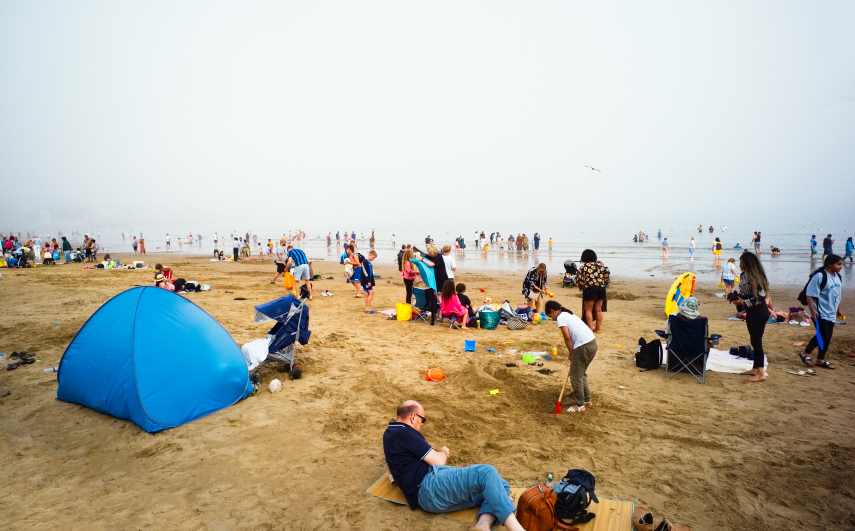Tips for Cooler European Holiday Travel

As summer approaches in Europe, major tourist destinations, including Spain, Italy, France, and Portugal, are issuing heat-health alert warnings due to blistering temperatures. With mercury climbing to 46°C and higher, travelers are being advised to reconsider their vacation plans during peak times. While warm sunshine and majestic scenery are tempting, the perils of extreme heat, including severe health risks and travel disruptions, cannot be ignored. European governments are urging travelers to remain vigilant and time their vacations carefully to avoid heat-related disorders.
This summer season, several of Europe’s most favored locations have been gripped by heatwaves that are increasingly difficult to overlook. Spain, for instance, has experienced severe heat for weeks, leading to “red” warnings from the Spanish Meteorological Agency (AEMET) across the entire country. The combination of scorching heat and perilous wildfires has raised significant concerns about traveler safety in regions where the summer sun can be relentless. In response, both foreign and domestic governments are implementing clear and achievable guidelines to better protect visitors from the harmful effects of extreme heat.
Governments are placing increased emphasis on the dangers of extreme heat and providing key recommendations for travelers. Official government websites, such as the UK’s Foreign, Commonwealth & Development Office (FCDO) and various European ministries, offer simple yet crucial advice: avoid direct sunlight between 11 a.m. and 3 p.m., when UV radiation is most intense and temperatures are highest. It is vital to stay hydrated with cold beverages and to avoid alcohol or coffee, as both can dehydrate the body. Travelers should seek shade whenever possible and use protective clothing, including wide-brimmed hats, sunglasses, and sunscreens. Special care must be taken to protect vulnerable individuals such as the elderly, infants, expectant women, and those with chronic medical conditions, as they are most susceptible to severe heat waves.
Summer holidays are intended for relaxation, but heat is a genuine public health problem that can quickly escalate into an emergency. Health authorities across Europe, from France’s Ministry of Health to the Spanish Meteorological Agency (AEMET), have expressed concerns about elevated heat disorders. In France and Italy, where extreme heat has already led to significant illness, governments are appealing to travelers to protect themselves. Major hospitals in Italian and French cities have reported an increase in hospitalizations due to heat, signaling that summer heat is becoming much more dangerous. The risks of heat exhaustion, dehydration, and heatstroke are legitimate, particularly for individuals who have not previously experienced such extreme weather. Travelers should take every precaution to stay healthy and hydrated, especially at midday when the sun is at its peak.
Beyond medical concerns, blistering heat can also significantly disrupt travel plans. Forest wildfires ignited by intense heat have swept through areas in Southern Europe, particularly Spain, Portugal, and France, resulting in evacuations, road and train closures, and occasional airline flight cancellations. European travel warnings indicate that while these interruptions may not be life-threatening, they can significantly impact travelers’ schedules. Travel insurance policies often cover instances of severe weather conditions, though most insurance firms will not provide refunds for heat-related cancellations unless an official government-level warning has been issued. Travelers are advised to carefully read the fine print of their policies before making reservations and to stay updated on any official advisories.
Given the ongoing heatwaves and travel alerts, some experts recommend that travelers consider re-routing their vacations to places with milder weather or opting to travel in early spring or late fall. Northern Europe, with its temperate climate, presents an excellent alternative for those wishing to escape the heat. Cities like Copenhagen, Oslo, and Stockholm offer pleasant weather and numerous attractions without the risks associated with scorching temperatures. For individuals already committed to summer vacations, appropriate planning is essential. Widespread activities can be rescheduled to early morning or late afternoon when the heat is less severe. For crowded attractions, such as beaches or historical sites, less crowded locations or indoor attractions with cooling equipment, like museums or air-conditioned venues, can be good alternatives.
A personal reflection from last summer in Barcelona highlights the importance of recognizing the strength of the midday sun and listening to the body’s warning signals. Observing tourists struggling with the heat underscored the need for vigilance. Taking a step back, rearranging itineraries, or relaxing movements can make a significant difference in enjoying a trip safely. Enjoying the sunset in cooler evening hours or sipping cold lemonade in the shade can be far more pleasant than battling the heat. These small adjustments allow for a more leisurely and logical vacation experience.
The most significant lesson from this heatwave primer is that your trip can still be as enjoyable as imagined, but with modifications. Choosing the right locations, organizing your day around cooler times, and being especially vigilant about your health are crucial steps to ensure a safe, comfortable, and memorable summer vacation. As temperatures continue to rise across Europe, making smarter, milder choices will allow travelers to experience the season to the fullest without compromising their well-being. A little preparation and caution can help make this summer memorable for all the right reasons. Stay safe, stay cool, and ensure your experience is a happy one.











